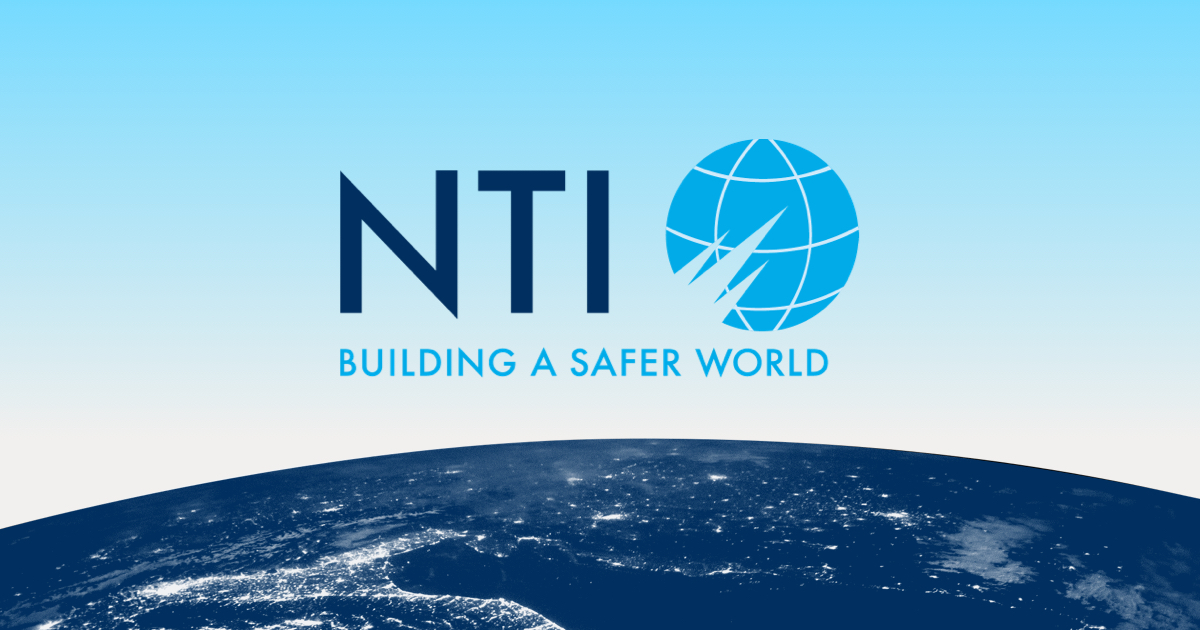Unlike Saudis, Houthis weren't after killing civilians and so they didn't aim for cities, targets were mostly military and airports in Saudi Arabia and considering the low accuracy of their ballistic missiles, destruction was limited, furthermore, absolute censorship both by Saudi Arabia and western sources was hiding their failed interceptions.
For example the following footage (28.3.2020) shows Patriot pac3 missiles (
active and in range) stationed around Riydh, missing Houthis missile by greet distance, as usual Saudis
claimed successful interception (Americans repeated it gladly and put it in your accurate charts).
Yet the clip which was published by local people later exposed the
lies:
There is no record of a ballistic missile attack on any Saudi city on 3/28/20 in CSIS chart:
Despite major efforts to negate Houthi ballistic missile assets through airstrikes, the tempo of ballistic missile activity in Yemen continues.

missilethreat.csis.org
BUSTED
CSIS has
not concealed any FAILED intercept in its chart.
The photo is useless as well. If a warhead was missed from this direction, it was taken down from another direction. It depends upon which system caught it.
Houthi have launched a total of
430 ballistic missiles and
851 drones at Saudi high-value infrastructure including airports and oil refineries during the (2015 - 2021) period. This is not a small count. Why the damage was
limited?
Due to this:
This is what I am trying to tell you.
And as pointed out in
here, Saudi were learning from Houthi tactics as well:
"Yet, a second factor also arguably impacted on the lethality of Houthi attacks: an improvement in the effectiveness of Saudi air defense. ACLED data show that the interception rate by Saudi forces doubled in 2020 relative to 2019, rendering the majority of Houthi drone and missile attacks in 2020 ineffective (see graph below). The interception rate for drones reached 77%, while the rate for rockets/missiles hit 40%. Indeed, after the September 2019 attacks, Saudi Arabia received new ground-based air defense systems from the US and started developing novel counter-drone systems. In response to Saudi interceptions, the Houthis developed new combined drone and missile attacks. In the past, the Houthis had deployed suicide drones to down Saudi defense systems and open the way for missile attacks. However, these combined attacks saw a 360% increase in 2020 compared to the year prior, and were especially directed against oil refineries."
Analysis of Houthi rocket, missile, and drone attacks from 2015 to 2022.

acleddata.com
Houthi attacks were most effective in
2019 including on the Abqaiq oil refinery
but Saudi stepped-up to the challenge and improved their defenses.
Saudi Air Force also contributed to this end.
I would still say that Saudi Air Defense is underdeveloped for a country of its size. Saudi still have work to do in this regard.
@Malik Alpha
Bro, have you seen death and destruction
across Saudi Arabia caused by so many "unstoppable" Houthi ballistic missiles and drones? You are welcome to respond.
1.Americans didn't care about WMD weapons, they gave these to Saddam themselves, they provided the satellite images of Iranian gathering points to increase the death toll, not to mention the delivery tool (the aircrafts), even after Saddam bombarded the Halabja city with these chemical bombs, US didn't allow the UN to condemn the Iraq. lol, intelligence failure!
Iraq made its first attempt to produce chemical weapons in the 1960s, but failed. Iraq made another attempt to produce chemical weapons in the 1970s:
Although Iraq’s chemical weapons program pre-dated the outbreak of war with Iran and originated in the early 1970s, the conflict dramatically expanded official interest in it. In the early 1980s, technical cooperation between Iraq and Egypt, which had used chemical weapons in its war in Yemen during the 1960s, was crucial. Egyptian scientists helped their Iraqi counterparts make rapid advances. Many Iraqi chemical weapons scientists also had received their PhDs from the Chemical Warfare Academy in Moscow between 1973 and 1979.[4] Additionally, the generally permissive international export environment at the time helped the Iraqis in acquiring many of the dual-use components and precursors required for the eventual manufacturing of mustard, tabun, and sarin gasses without arousing suspicion. Prior to 1984, Iraq faced no obstacles whatsoever.[5] The Iraqi project leader’s familiarity with the East-German industrial landscape helped Iraqi commercial operations in Europe.[6]
The second installment of a three-part article addressing the legacy of chemical weapons use in the Iran-Iraq War and Iran’s chemical weapons program. The article focuses on the history of and lingering debate about Iran’s chemical weapons program and allegations of limited battlefield use. Part...

www.wilsoncenter.org
Iraq managed to produce chemical weapons in the 1980s:
The 1980 Iran-Iraq War gave new impetus to chemical weapons research. In June 1981 Iraq founded Project 922, within the Ministry of Defense, to oversee development and production. [4] Project 922 drew much of its equipment and expertise from the al Rashad laboratory complex of the al Hazen Institute, and was able to produce tens of tons of mustard gas by 1983. [5] Project 922 continued to expand in size and scope, and by 1989 had produced several thousand tons of CW agents, including mustard gas and two different types of nerve agents.[6]
Overview of Iraq's chemical capabilities and nonproliferation activities

www.nti.org
American side of story is this:
The U.S. government may be considering military action in response to chemical strikes near Damascus. But a generation ago, America’s military and intelligence communities knew about and did nothing to stop a series of nerve gas attacks far more devastating than anything Syria has seen, Foreign Policy has learned.
In 1988, during the waning days of Iraq’s war with Iran, the United States learned through satellite imagery that Iran was about to gain a major strategic advantage by exploiting a hole in Iraqi defenses. U.S. intelligence officials conveyed the location of the Iranian troops to Iraq, fully aware that Hussein’s military would attack with chemical weapons, including sarin, a lethal nerve agent.
The intelligence included imagery and maps about Iranian troop movements, as well as the locations of Iranian logistics facilities and details about Iranian air defenses. The Iraqis used mustard gas and sarin prior to four major offensives in early 1988 that relied on U.S. satellite imagery, maps, and other intelligence. These attacks helped to tilt the war in Iraq’s favor and bring Iran to the negotiating table, and they ensured that the Reagan administration’s long-standing policy of securing an Iraqi victory would succeed. But they were also the last in a series of chemical strikes stretching back several years that the Reagan administration knew about and didn’t disclose.
The U.S. knew Hussein was launching some of the worst chemical attacks in history -- and still gave him a hand.

foreignpolicy.com
This was a bad time. Two Islamic countries were fighting each other, and the US was supporting Iraq. One reason is that the US and Iran were
not on good terms with each other after the fall of Shah of Iran in 1979:

www.jimmycarterlibrary.gov
Here are key moments in the 1979 Iranian takeover and subsequent 444-day hostage crisis at the U.S. Embassy in Tehran.

apnews.com
Do you think this was a sound decision?
I understand that the US has been UNFAIR to modern Iran in the past, this is apparent in the 1953 Iranian
coup d'état to topple Iranian PM Mohammad Mossadegh -
a controversial and shameful move. Do keep in mind that the British and the Americans were close to each other due to shared World War experiences and the British managed to convince American President Theodore Roosevelt to make this move.
It's no secret that Iran and the U.S. have a history of animosity toward each other. But when and how did it begin? This week we look back at four days in August 1953, when the CIA orchestrated a coup of Iran's elected Prime Minister Mohammad Mossadegh.

www.npr.org
Nevertheless, US supported Iran when Shah of Iran was in power and helped Iran build a capable military force. When war with Iraq broke out,
Iranians could count on American equipment to deliver results (
it certainly did). Shah of Iran might be a mixed-bag for Iran as a leader but his foreign representation was good. Shah of Iran supported Pakistan as well.
But Iran under Ayatollahs is lacking in foreign policy.
2.WMD was just an excuse, US wanted to dominate the middle east and it's energy resources, American generals have admitted their government was aiming at Iran as the last mission. They even simulated the war "Millenium challenge 2002", but ended badly. Bush in his book admits Iran was the next target after Iraq, but his security advisors opposed him.
American President George Washington Bush considered dismantling Iranian nuclear program but this did not come to pass. US was preoccupied with Iraq and Al-Qaeda Networks instead.
Millennium Challenge 2002...

American battlefield simulation program(s) do not represent reality but aimed to teach how to fight expected battles the right way. You are alluding to Millennium Challenge 2002
Scenario A in which USN fought poorly to see how it goes from a learning standpoint. The outcome motivated USN to change its deployment strategy and tactics in Millennium Challenge 2002
Scenario B to see if it helps (
it certainly did). This is the reality that you seem to miss.
And you literally represent American shameless lies and propaganda.
Millions of French protesters demanded their government to exit the NATO, did they overthrow the government? no, did it become an armed riot? no, because there is no a filthy US to exploit the situation.
Colorful revolutions is no longer a secret, everyone knows west/US provokes and multiplies riots to topple the opposing governments. why should pro-Russian people in Ukraine tolerate a coup regime? if pro-west people could use force to topple the democratically elected government, so can the eastern pro-Russia people in Ukraine. and that's what happened.
In fact, even that clown and drug addict Zelenskyy was elected with a promise to normalize the relations with Russia, but he did the opposite (as was expected from a puppet), he started targeting pro-Russia civilians, turned Ukraine into US bio-weapons lab, and threatened Russia. well, next time make sure you have the power then start threatening!
Recently German counselor admitted 2014 peace plan was just a lie to buy time, time for what? military option.
You need to mind your language, I am not deluded like you.
Can you prove in the
International Court of Justice that the Ukrainian Euromaiden protests were fake and a part of American conspiracy? Who is stopping you if you have undeniable proof? Go ahead and prove it.
Meanwhile, let's have a look at some Academic research:
Nadia Diuk, EUROMAIDAN: Ukraine's Self-Organizing Revolution, World Affairs, Vol. 176, No. 6 (MARCH / APRIL 2014), pp. 9-16

www.jstor.org
Andrii Gladun, Impact of Repression on Mobilization, Social Justice, Vol. 46, No. 2/3 (156), Special Issue: Policing the Protest Cycle of the 2010s (2019), pp. 29-50

www.jstor.org
Do you really think that Russia is a completely innocent party and has never intervened in the internal affairs of other countries and have never invaded other countries? To name a few: (1) Soviet Union invaded Poland in 1939. (2) Soviet Union invaded Finland in 1939; (3) Soviet Union invaded Baltic states such as Estonia, Latvia, and Lithuania in 1940; (4) Soviet Union motivated North Korea to invade South Korea in 1950; (5) Soviet Union invaded Czechoslovakia in 1968; (6) Soviet Union invaded Afghanistan in 1979; (7) Russia intervened in Moldova to shape its political landscape in 1992; (8) Russia intervened in Georgia to support Georgian separatists in 2008; (9) Russia intervened in Ukraine to support President Viktor Yanukovych in 2014; and (10) Russia intervened in Syria to support Assad administration in 2015.
Russian armed groups are also active in Africa:
This week on The Horn, Alan is joined by Julia Steers, Nairobi bureau chief and correspondent for VICE News, to discuss the Russian military contractor Wagner's operations in Africa, why African countries partner with the group and how Western governments are responding.

www.crisisgroup.org
This too:
A U.S. intelligence review found that Russian agencies and figures aimed to exert political influence abroad and sway elections on behalf of the Kremlin.

www.nytimes.com
These are not controversial developments? Maybe not in your books because Iran is doing the same in Iraq, Lebanon, Syria, and Yemen. Your judgement falls in the "the pot calling the kettle black" category now.
At the least, Americans can be introspective:
Disputes over alleged meddling are not merely rhetorical dueling between Moscow and Washington. Rather, they reflect profound social challenges and their destabilizing effects, says Igor Istomin.
daviscenter.fas.harvard.edu
As for your Ukrainian Biolabs theory:
Before Russia invaded Ukraine in February, its diplomatic missions began circulating some particularly fantastical lies. It's tempting to write off such claims as cartoonish propaganda. But Russia is making similarly outrageous claims to the United Nations and other international forums. Such...

www.rand.org
Chinese call for the investigation of Ukrainian Biolabs is also ironic in view of the Wuhan Lab COVID-19 controversy.
Admittedly, American far-right idiots like Alex Jones and Tucker Carlson also feed conspiracy theories.
Why you don't post the reports that mentions Ukrainian military uses civilians as shield? is that against your agenda? isn't Zelensky's comment that donetsk children should get used to underground classes a warcrime?
A report from 8 years earlier:
School lessons and shelling forge new identity in east Ukraine | Financial Times
Both Ukraine and Russia have done questionable things in the war, but Russian war crimes overshadow anything Ukraine has done in comparison:
GENEVA/ VIENNA (16 March 2023) – Russian authorities have committed a wide range of violations of international human rights law and international humanitarian law in various regions of Ukraine, many of which amount to war crimes, the Independent International Commission of Inquiry on Ukraine...

www.ohchr.org
Ukrainian President Volodymyr Oleksandrovych Zelenskyy did call upon all Ukrainian nationals to leave Donetsk region if they can:
On Saturday night, Ukrainian president Volodymyr Zelensky called Saturday night for the population to evacuate this Eastern region, whose cities are targeted by Russian forces.

www.lemonde.fr
Same thing about colorful revolution in Iraq, murderers who were taking their selfie with the hanging corpse of a nude teenager are called protestors! savage creatures who attacked an ambulance and killed the popular commander of Hash-Al-Sabi (famous for his bravary in fight against ISIS) are called political protestors.
of course, those who called the ISIS as modarate rebels, wouldn't hesitate calling the rest of terrorists as freedom fighter.
Do you see me defend American atrocities and controversies in my posts? Pointless rambling.
Like any other country, Iran has the right for self defense, once a while these terrorists (which as usual you call opposition) attack Iranian border guards, and also are responsible for smuggling weapons into Iran.
They are armed and financed by mother of terrorists U.S, their military bases in Iraq is against Iraq's sovereignty as well but since US is supporting them, Iraq central government can't deport them.
IS there any other terrorist which you want to support?
Missiles do not differentiate between the innocent and the guilty. This is the point.
Iran’s Islamic Revolutionary Guard Corps claimed responsibility for the attacks on the offices of Iranian opposition parties, referring to the targets as “terrorist bases.” But residents and witnesses told Human Rights Watch that some of the attacks struck towns and villages where the opposition parties were not conducting any military activity. Human Rights Watch could not verify whether sites hit in mountainous regions host military training activities by the opposition parties targeted, as Iranian authorities claimed.
“Iran’s Revolutionary Guards forces’ attacks on residential areas in the Kurdistan Region of Iraq is part of a long history of lethal attacks on civilians, including during the war in Syria,” said Adam Coogle, deputy Middle East director at Human Rights Watch. “Countries seeking to hold Iran accountable for its brutal crackdown in recent days should also ensure that those responsible for indiscriminately killing civilians abroad are held accountable as well.”
The attacks on the opposition groups in the Kurdistan region of Iraq coincided with widespread protests in Iran that began on September 16, following the death of Mahsa (Jina) Amini in the custody of Iran’s “morality police” after she was detained for “improperly” wearing her hijab. Iranian authorities have responded to weeks of protests with brutal violence, killing and injuring hundreds of protesters.
On September 24, the Revolutionary Guards shelled the offices of Iranian opposition parties in the Sidakan district northeast of the city of Erbil. The attacks targeted the Kurdistan Democratic Party of Iran (KDPI) and the Komala Party of Iranian Kurdistan, which did not result in casualties. But media reports indicate Iraqi residents and Iranian refugees had since abandoned six nearby villages.
The KDPI was formed in 1945 and the Komala party in 1969, both as social democratic parties. Both parties have previously engaged in armed conflict in Iran, and reportedly still maintain armed wings.
On September 28, the Iranian military again struck the offices of the KDPI and the Komala party in the Koya district of Erbil governorate and the Zargwezalla residential complex in Sulaymaniyah governorate.
“We are a political party, not a military group,” Fuad Khaki Baygi, a member of the KDPI, told Human Rights Watch. “[Iranian authorities] are trying to divert attention from the protests in Iran, so they’ve resorted to indiscriminate shelling in civilian-populated areas in the Kurdistan Region of Iraq.”
According to UNICEF, the attacks in Koya struck a school in a refugee settlement, injuring two children and killing a pregnant woman. Human Rights Watch identified the woman as Reyhane (Shima) Kanaani.
“Our home is one and half kilometers away from the party headquarters,” said Zanyar Rahmani, Kanaani’s husband, who works at the KDPI offices that were attacked. “[We live] in a camp for refugees, mostly women and children live there. The area where my wife and I live is not a military place, it is residential for civilians.”
Some of the attacks by Iranian Revolutionary Guards on Iranian opposition party offices in the Kurdistan Region of Iraq in late September struck towns and villages where the parties were not carrying out any military activity, according to local residents.

www.hrw.org
This is not a good look.
Iran should reach out to the Iraqi government to dismantle armed groups that threaten Iranian security. This is the protocol.
Otherwise, you are in the same boat as the US and Russia. Welcome to the club, I suppose.
Agha, in martikeh modir ke daree alan bahash ba's mikonee hamintori ra mire fohsh mide be hame va ban mikone harkasiro bebine dare zede gharbiya harf mizane ya jorat konan behesh javab bedan.
Other than that, a fantastic post that is too hot to handle for some.

See above.




































